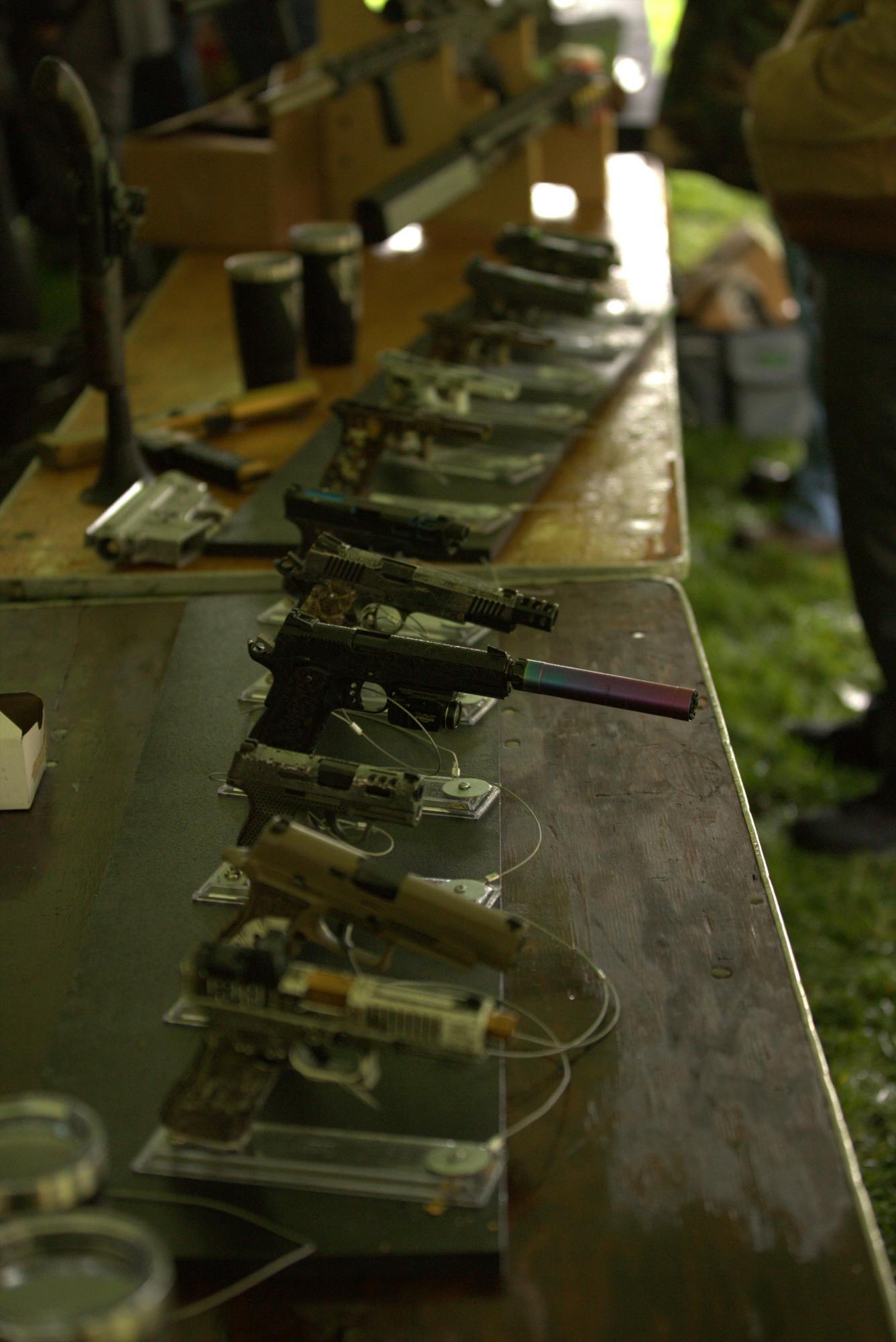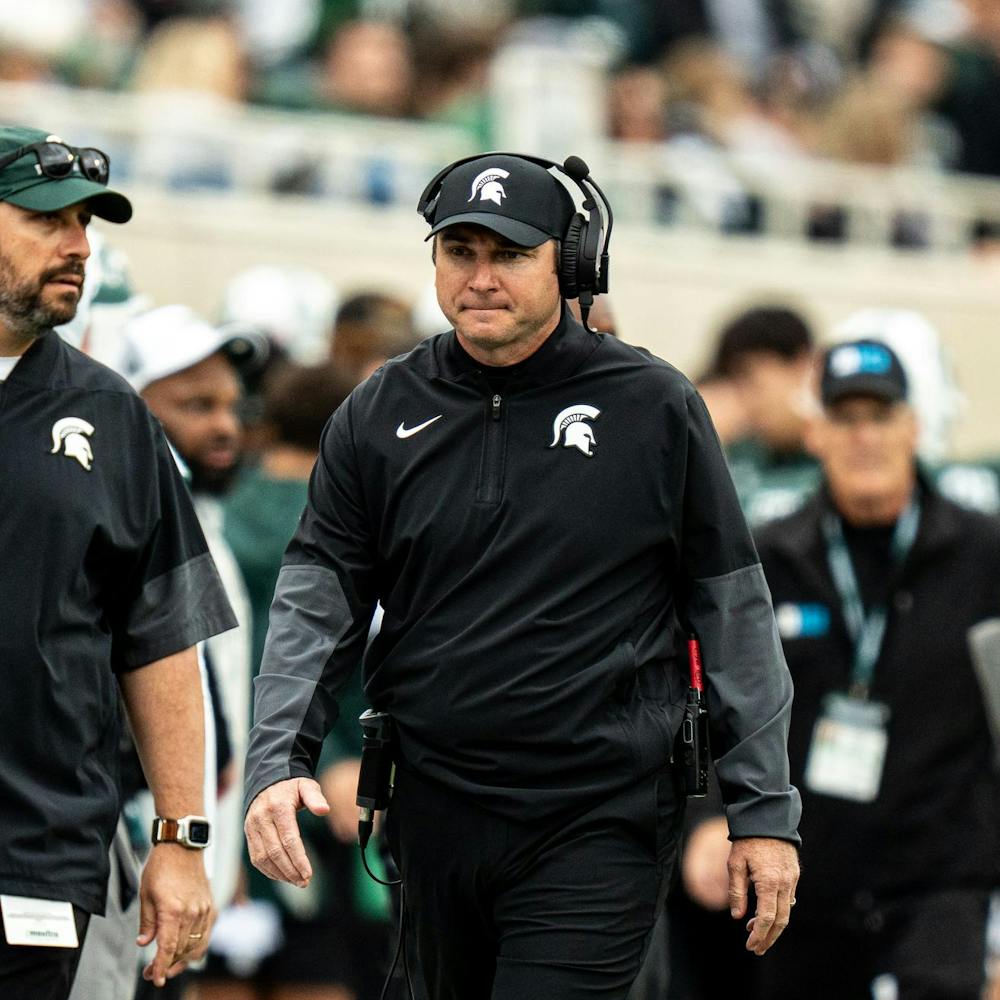I went in not quite sure what to expect but with every intent to cover the event objectively. I heard some employees at the House of Representatives were warned to work from home for security reasons due to the event. However, the Second Amendment March has traditionally been peaceful — their website clarifies their priority is not to cause trouble but to engage in discourse with state legislators and the local community. We attended the rally as a team of four and were told if we felt unsafe, we should leave immediately.
Additionally, I’m Indian-American. Rightfully or not, people tend to take my dark skin as an indicator of my political stances — I feel as though I walk into every march or rally with “liberal” written all over my face. I was one of only a few other BIPOC attendees at the rally. I’m never sure how this will impact the way I’m treated at political events.
However, when we left, it was because we all had classes that afternoon and because we couldn’t feel our fingers — not because we felt unsafe.
While one of my colleagues expressed trepidation and apprehension in covering such a rally, I had a different experience.
As a BIPOC individual, a woman, and as a journalist, I did not feel uncomfortable or unsafe at the Second Amendment March — except during Doug Giles’ keynote speech.
As someone who is not accustomed to guns and gets cold easily, I did feel a little bit uneasy being in close proximity to so many guns and was uncomfortably cold.
Therefore, it was the guns and the weather — not the people or the content of the march itself — that put me a little bit on edge.
It’s important to note that while this event is often branded as a right-wing rally, the Second Amendment organization identifies as non-partisan. They have even had Democratic legislators speak at the event in the past.
“We do, however, naturally attract many speakers and attendees who are not aligned with the Democratic Party, simply because Democrats tend to push the most gun legislation," Second Amendment March President Terri Stocke said.
As we arrived at the event, we decided to walk around, check out the tables and get a sense of what the rally was all about. I shared a passing smile with one of the men working a table, and as I made to move on, he initiated a conversation. I asked him about his business, and he patiently explained how finance processing relates to the Second Amendment.
Halfway through our casual conversation, I asked if I could formally interview him. He had no objections and was enthusiastic and thoughtful in his responses. Through this conversation, I learned gun ownership for him was a family tradition. Hunting and shooting were ways his family bonded, and guns hold an important place in his life and relationships.
I disagreed with a lot he said, too, and while I didn’t voice this disagreement, he could definitely read it on my face. There was absolutely zero aggression, antagonism or malice in his expression or response. He remained friendly and kind the entire time, shaking our hands after the interview was over.
Everyone I approached was more than happy to talk to me; some even suggested moving away from the warmth of the tent and into the rain so I could get better audio for our interviews. Some people were a little guarded, but that’s a pretty natural response to being asked for an interview. Earlier this year, I interviewed people while tailgating, and I received much more suspicion and hostility from my fellow MSU students than anyone at the march.
I mentioned how cold it was to a man working at a table. He reached inside his pockets and handed me and my co-reporter his own hand warmers. I tried to politely decline, but he insisted with a smile.
While a tad bit of curiosity and classic midwestern friendliness defined most of my experience at the rally, keynote speaker Doug Giles was a disappointing exception.
He didn’t talk much about guns, which was odd, considering he was the keynote speaker at the Second Amendment March. His speech was homophobic and full of the most toxic sort of masculinity, read all about it in his book, “If Masculinity is Toxic, Jesus is Radioactive." He was inflammatory in a way none of the other speakers were, and while some people cheered along, not everyone did.
His speech was particularly insensitive to speaker Mary Callison, who had gone just before him and delivered a moving speech about what gun rights mean to her, personally. Callison began advocating for gun rights after her sister was sexually assaulted and stabbed. Callison believes if her sister had been armed, she would’ve been able to defend herself. Callison offered a compelling argument for the Second Amendment with her claim that gun ownership can empower women.
During the event, I learned about how the marchers felt the media portrayed them. They felt as though they’ve been portrayed as extremists, or terrorists, when most of them are just everyday people who want to be able to keep their guns for hunting, shooting and defending themselves.
Support student media!
Please consider donating to The State News and help fund the future of journalism.
We weren’t the only media there, but the reporters with the big cameras flocked towards the few members of the Boogaloo group that were near the rally. Though these extremists stood far from the main tent and were not participating in the actual rally, yet all the cameras were on them. Those reporters interviewed them for a long time and didn’t speak to the mass of people beneath the tent.
According to Stocke, Second Amendment March is unable to control who shows up to its public event.
“Oftentimes,” she said, “the press will seek out the most… interesting… attendees they can find to try and paint all gun owners in a certain light,” which is precisely what happened.
Despite the mistrust of the media that was voiced, we were able to interview several people for our article and chat with several more.
While Giles was the only speaker who expressed homophobic, anti-feminist views, other speakers did use harsh rhetoric, blamed Gov. Gretchen Whitmer for their issues and expressed distaste for the Democratic party.
Gun ownership isn’t an “us vs. them” issue, no matter how the speakers at the event might’ve felt about it. The Second Amendment March organization could advance their interests much more effectively if they made more of an intentional effort to create a non-partisan environment and appeal to all gun owners.
The pandemic caused a sense of upheaval, uncertainty and anxiety in 2020. Because of this, gun purchases soared, particularly among women and the LGBT community. Black gun ownership shot up more than 58% after the murders of George Floyd, Ahmaud Arbery and Breonna Taylor, according to the National Shooting Sports Foundation. While most of the speakers at the event were white men, this new demographic of gun owners went largely ignored.
According to a study from Boston University, while right-wing gun owners favor guns for recreational purposes more often, left-leaning gun owners tend to keep guns for self-defense. Both reasons were touched on at the rally, but if some speakers had been less inflamed about the Democratic Party and more focused on having a non-partisan discourse about gun use, their argument would’ve been much stronger.
As human beings, it’s natural to be uncomfortable with things we’re not familiar with. We have preconceived expectations and biases. That’s just part of the human experience. However, as journalists, it’s our responsibility to put those expectations aside and report on what’s actually going on in front of us. We owe it not just to our readers but also to our sources, who trust us to represent them fairly.
And as citizens in our democracy, especially in our polarized nation right now, it is imperative we remember one person is not defined by their political affiliation. We as Americans are so much more than red or blue, so much more than pro-gun or anti-gun. Humanity is so much more nuanced, and painting gun owners as people who are right-wing, homophobic and anti-woman just isn’t fair.
While most of the attendees were speaking to us from their place of privilege as white men, we also have to recognize the privilege and power we carry as journalists. The power of representation means we journalists play a massive role in how society views other people.
Media scholar John Fiske comments about the power of representation in his piece “Act Globally, Think Locally.” Fiske explains representation as a canvas. In this power dynamic between reporters and our sources, we have the power to use our sources as a canvas on which to define ourselves. This becomes an inaccurate representation of our sources created to make us feel good about ourselves and doesn’t truthfully portray the story of our sources. This leads to intensifying stereotypes and narratives about groups of people that are wrong.
I don’t agree with a lot of what I heard at the Second Amendment March. However, I learned way more from attending the march than I would have from talking to someone who shared my opinions about gun control. And, I did become more open to exploring what the Second Amendment means to this country and to marginalized communities. For me, covering this event was a good reminder talking to people with different experiences and opinions is the best way to learn, and putting my expectations aside always leads to positive interactions and personal growth.
Discussion
Share and discuss “COMMENTARY: Covering a Second Amendment rally as a woman of color” on social media.







